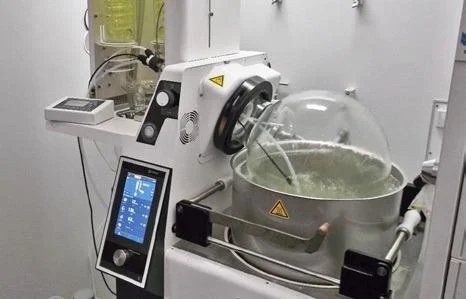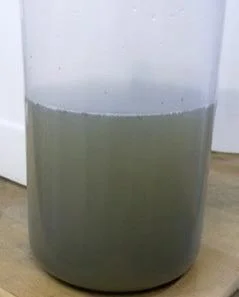Blog Standard

Automated Water Sample Concentration: Optimizing Radionuclide and Heavy Metal Analysis Using Large-Scale Rotary Evaporation
Water is a critical source of hydration and serves as the primary medium for the intake of chemotoxic and radiotoxic substances. Given its significance, water quality is rigorously monitored, which demands significant efforts. Radionuclides and heavy metals are analyzed in various water sources, including surface water, drinking water, groundwater, wastewater, and rainwater, primarily as part of nuclear power plant monitoring. Continuous monitoring is conducted for β-emitters such as tritium, 14C, and 90Sr, as well as β-emitting isotopes of uranium, plutonium, americium, and curium, and γ-emitters like 137Cs and 60Co.
The detection limits for these substances often require concentration procedures, typically followed by radiochemical purification, to minimize interference across measurement techniques such as radiometry, mass spectrometry, and others. Radionuclide analysis is also carried out for research purposes, where the required detection limits are generally even stricter.
Evaporation is an effective method for concentrating radionuclides and heavy metals from large aqueous samples. Alternatively, sorbents or flocculating agents can be used, although these methods are less effective when analyzing samples containing chemically diverse radionuclides such as 137Cs, 90Sr, and plutonium isotopes.
Gentle concentration through evaporation in open vessels has traditionally been used, but it becomes time-consuming and impractical for larger sample volumes. For samples starting at around 10 liters, the use of large-scale rotary evaporators provides a more efficient solution. Additionally, distillation offers the advantage of simplifying the purification of tritium, which is found in aqueous samples as HTO (tritiated water). The distillate from a rotary evaporator can be directly used for activity measurement, such as through liquid scintillation counting for tritium analysis.
Conventional evaporators, however, require frequent manual refilling of the evaporation flask, leading to ongoing personnel involvement during normal working hours, which interrupts other tasks. Outside of operating hours, these evaporators must be shut down, significantly extending the evaporation process.
Achieving Automated Efficiency in Water Sample Concentration
To automate the concentration of water samples using a large-scale rotary evaporator with an automatic module.
The automated Hei-VAP Industrial large-scale evaporator, equipped with the Distimatic automatic module from Heidolph, can overcome the limitations of traditional rotary evaporators. The level of sample concentrate in the evaporation f lask is monitored by a capacitive fill-level sensor. When the sensor detects insufficient media, water is automatically added via a PTFE tube from a sample storage tank. The automatic module detects when the storage tank is empty and stops the operation, thereby ensuring that the evaporator can run overnight. With appropriately sized storage tanks, operation over the weekend is also possible.

Hei-VAP Industrial
In this case, the customer sought to replace the conventional large-scale evaporator with an automated system to increase efficiency. The goal was to evaporate up to 70 liters of rainwater to about 1 liter within one day. The pH of the rainwater samples was adjusted to 1 using nitric acid, and pre-filtered with a 63 μm filter before the evaporation process.
Method and Results
Using the Distimatic Industrial Platinum 8 Package, the system achieved a distillation rate of 4.6 liters per hour (l/h) with the recirculation chiller set to 5°C, a rotational speed of 115 rpm, a vacuum value of 30 mbar, and a heating bath temperature of 65°C. The resulting concentrated rainwater is shown in Fig. 2.
The customer’s requirements were successfully met, and the sample volume could even be increased. The automated system saved approximately one technician work hour per day compared to conventional rotary evaporators. Since the system can run overnight, the entire evaporation process is completed much more efficiently, reducing the time required.

Fig. 1: Hei-VAP Industrial with Distimatic test Setup

Fig. 2: Concentrated rainwater
Conclusion
This case demonstrates that Heidolph products enable the automation of rainwater evaporation, significantly improving efficiency by ensuring continuous operation during overnight and weekend shifts. The automation process leads to faster results with a smaller workforce, achieving the same outcome as conventional evaporators with identical technical designs but in a reduced timeframe.
Inkarp Instruments, is recognized as India's leading distributor and service provider for Heidolph products. Dedicated to offering cutting-edge scientific solutions, Inkarp guarantees top-quality products and dependable support for researchers across the country.
References : Heidolph

